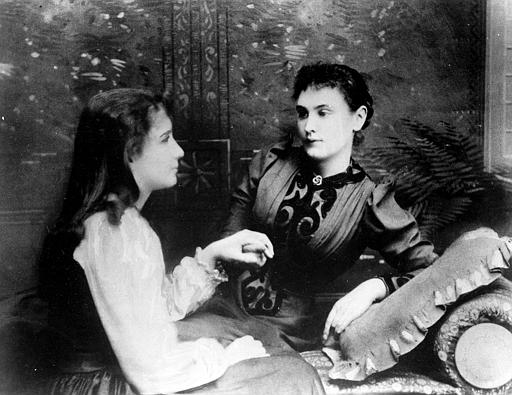By: Echo Rogers
Imagine a world with nothing to hear and nothing to see- this was Helen Keller’s world.
Keller’s story began on June 21, 1880: the day she was born. Keller was born a healthy, happy baby to a well-educated mother and a father who was a retired Confederate Army captain.
When Keller was only 19 months old, she caught an unknown illness that caused her to lose both her hearing and her vision. Despite her intelligence, Keller grew frustrated as she grew up because she realized quickly she wasn’t able to communicate with her family. In order to show her family her frustrations, Keller would frequently throw tantrums. As Keller said in her autobiography, “The need of some means of communication became so urgent that these outbursts occurred daily, sometimes hourly.”

However, Keller would learn to communicate. On March 3, 1887, Anne Sullivan arrived at Keller’s house to be her teacher. Sullivan, too, had little sight; however, she was able to restore some of it after many surgeries. It was her belief she could help Keller through obedience and love.
As a result, Keller’s parents allowed Sullivan to remove Keller from their house and to a nearby cottage. This is where Sullivan began to teach Keller words. She was able to accomplish this by handing Keller objects and then signing the name of the object in Keller’s hand; however, the words had no meaning to a little girl who never grasped the concept of words. Keller understood that certain objects had letters associated with them, but she couldn’t understand the joining of them into words.
On April 5, 1887, that all changed. Sullivan was determined to clear up Keller’s confusion with words like “mug” and “milk” which Keller confused with “drink.” Sullivan took her outside, and ran Keller’s hand underneath the water pump as she spelled out the word water. That’s when Keller understood. After that, no one could stop Keller. She wanted to learn everything.
Keller continued her studies: learning to read Braille, printing her own letters, and even speaking. This led to her Radcliffe College where she earned a Bachelor of the Arts in 1904. Even through college, Sullivan stayed by Keller’s side, spelling words into her hands when she needed help.
That’s also when Keller started her writing career. In 1904, she published her autobiography, The Story of My Life. She wrote speeches, articles, and essays, but Keller did more than write. She also stood for the betterment of people.
It was through her writing she preached this idea. Keller stood for many people. She not only fought endlessly for women’s suffrage, but also joined the American Foundation for the Blind (AFB). From this, she traveled all over the United States. This resulted in rehabilitation centers being built and a greater accessibility to education for those with vision loss.
Keller even assisted World War II veterans who had either lost their hearing or their sight. It was to these veterans she preached faith and strength through adversity.
Keller was also a part of the American Foundation for Overseas Blind (now Helen Keller International). It was through this organization she became an ambassador for the blind as she traveled all over the world.
However, to list all she had done and the all the lives she had touched would be nearly impossible. Throughout her life, Keller had reached the lives of many and even those she didn’t have direct contact with. Keller left behind a great legacy. According to the Perkins School for the Blind, she believed that all have the right as Keller said, “to feel at home in this great world.” And it was important, Keller said, to have strength and faith through even the greatest adversity. Whether it was through the veterans of World War II, women, or the visually impaired, Keller inspired many.
A legacy of strength, faith, and human rights is what she left behind, and it’s this she will be remembered for. According to Harvard Magazine, Keller’s honorary degree stated, “From a still, dark world she has brought us light and sound; our lives are richer for her faith and her example.”






